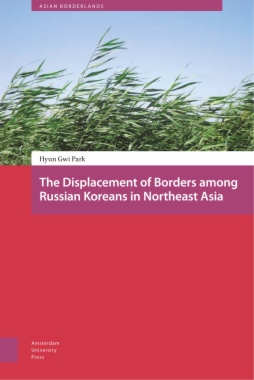Since the nineteenth century, ethnic Koreans have represented a small yet significant portion of the population of the Russian Far East, but until now, the phenomenon has been largely understudied. Based on extensive historical and ethnographic research, this is the first book in English to chart the contemporary social life of Koreans in the complex borderland region. Dispelling the commonly held notion that Koreans were completely removed from the region during the country's attempt to 'cleanse' its borders in 1937, Hyun Gwi Park reveals timely new insights into the historical and current experiences of Koreans living along the Eurasian frontier.
- Cover
- Table of Contents
- Acknowledgements
- Note on Transliteration, Translation, and Names
- Preface
- Introduction
- Displacement and mobility
- Encounters: Russian Koreans in the urban landscape of the RFE
- ‘Wounded attachment’
- Russian Koreans and Soviet disengagement from the Asian-Pacific frontier
- Unity and diversity
- Fieldwork and outline of chapters
- 1. The history of ‘the Korean question’ and border-making in the Russian Far East
- An early crossing: the flight from hunger
- The formation of a border and the beginning of regulation (1884-1904)
- The Korean question and the ‘yellow peril’
- Internal diversification of Korean settlers and the anti-Japanese movement
- Building Soviet socialism and cleansing the Soviet Far East
- Memory in silence in the present
- 2. Repatriating to the Russian Far East, Confronting the Transition
- Early repatriates: returnees from Central Asia in the 1950s
- Newcomer Koreans in the early 1990s: ‘organized’ migration in chaos
- From migrants to traders in the mid-1990s
- Late newcomers and problems with documents
- The notion of ‘locality’ for newcomer and old resident Koreans
- 3. Living Soviet Socialism the Korean Way
- Rice cultivation: socialist peasants in Soviet Central Asia
- Work vnye (‘outside’) the system: Gobonjil during Soviet times
- Nomadic Socialist Peasants in the lacunae of Soviet socialism
- Trading cultivators or cultivating traders: trading political status with economic wealth
- One’s own people in/outside the Soviet system
- Living on the border of Soviet socialism
- 4. Greenhouse society
- The economic conditions for greenhouse cultivation
- Greenhouse construction and the preparation of young plants indoors
- The greenhouse as threshold
- The greenhouse in gendered terms
- The extended space of the house
- Food: everyday meals and ceremonial banquets
- The transformation of women in the continuity and extension of the house
- Becoming persons
- 5. Recalling History
- Koreiskii Dom as a stage for diasporic politics
- Leadership change and its implications
- Different visions for a Russian Korean collective identity
- Epilogue
- Appendix 1
- Appendix 2
- Glossary
- Bibliography
- Index
- List of Maps, Figures and Tables
- Maps
- Map 1 Russian Far East 1884-1917
- Map 2 Russian Far East circa 1937
- Map 3 Contemporary Russian Far East
- Figures
- Figure 1.1 A memorial stone for the first Korean settlement in Khasanskii raion
- Figure 1.2 The governor of Primorskii krai in excursion to the border in Khasanskii raion
- Figure 1.3 A memorial statue for war heroes in Khasanskii raion
- Figure 2.1 Women vegetable sellers in the marketplace
- Figure 2.2 Salad selling stall in the marketplace run by a Korean woman
- Figure 2.3 A salad factory run by Lena Yugai
- Figure 4.1 A greenhouse in the backyard of Marta Ivanovna’s house
- Figure 4.2 Inside of a greenhouse, seen from the entrance
- Figure 4.3 Day laborers
- Figure 4.4 Seedlings indoors
- Figure 4.5 A quotidian meal
- Figure 4.6 Banquet table at the wedding party for Larisa’s son
- Figure 4.7 A girl’s first birthday party in the evening
- Figure 4.8 A table at the 84th birthday of a woman in Novoselovo
- Figure 5.1 Old Koreiskii Dom
- Figure 5.2 Friendship village
- Figure 5.3 Korean cultural centre in Ussuriisk (New Koreiskii Dom)
- Figure 1 Diagram of relatedness in Novoselovo
- Tables
- Table 1 The change of population in Primorskii Krai according to nationality in 1990-1998
- Table 1 The change of Korean population in comparison with other nationalities between 1897 and 2010 in Primorskii Krai, Russia

